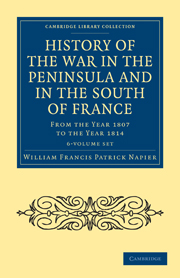 Ever since I was old enough to control my soft furnishings (shades of Mrs Panton!), I have had a bit (or a lot) of William Morris in the house. My college, forty years ago, had Morris papers below the dado rail in the corridors. (I must go and see if they still do – indeed, if they still have dado rails…)
Ever since I was old enough to control my soft furnishings (shades of Mrs Panton!), I have had a bit (or a lot) of William Morris in the house. My college, forty years ago, had Morris papers below the dado rail in the corridors. (I must go and see if they still do – indeed, if they still have dado rails…)
We have just reissued (among many other Pre-Raphaelite items) The Collected Works of William Morris (24 volumes) and the subsequent two-volume William Morris: Artist, Writer, Socialist. All these books (the ‘works’ in which, I should emphasise, are his writings: there are illustrations, but few, and in black-and-white only) were compiled and edited by his younger daughter, May, who was very much the keeper of the flame. Volume 2 of Artist, Writer…contains a witty (Morris did not join the Fabian Society because ‘the furniture would have driven him mad’), but somewhat acerbic and definitely self-serving essay, ‘Morris as I Knew Him’ by George Bernard Shaw. Disappointingly for CLC, the 1901 biography of Morris by someone who knew him very well, Burne-Jones’s son-in-law, the classical scholar J.W. Mackail, is still in copyright – though inevitably it is reticent about the many personal and emotional crises which made Morris’s astonishingly productive life at times such a burden to him.
But all this made me return to the biography by Fiona MacCarthy, which I had bought and devoured when it first came out in 1994, but had not re-read since (though it is a wonderful resource for looking up almost anything about late-Victorian culture). I was alarmed by two things: how much I have forgotten, and what a brick of a book (in the purely physical sense, I hasten to add) it is. Both issues are of course age-related, but the latter would be less of a problem were it not for the Great Hole in the Cycleway Incident of February 2010 (a story for which the world is not yet prepared).
The two great benefits of re-reading this superb book now are that I can pick up the volumes of the Works and read the poems, tales and essays MacCarthy refers to; and that since being involved in the Cambridge Library Collection, I know (however superficially) so much more about the Victorian period than I did twenty years ago. The result is a continuous stream of (usually internal) shrieks and whoops of recognition as yet another of ‘our’ authors comes into view. (Talking of which, the brilliant French mathematician Sophie Germain popped up in ‘In Our Time’ on Radio 4 this week, à propos of Fermat’s Last Theorem.)
For example, Morris was briefly apprenticed to the architect G.E. Street, though he later quarrelled dreadfully with him over his work in heavily restoring, rather than conserving, medieval churches – this and other rows led to the formation of the Society for the Protection of Ancient Buildings in 1877. Apart from its heroic efforts in the UK ever since, the Society took over the work of resisting wholesale restoration/rebuilding in Venice (especially St Mark’s itself) as Ruskin’s powers began to fail him, so the whole world should be grateful to it.
Needless to say, Morris worshipped Ruskin: Modern Painters, and The Stones of Venice, especially ‘On the Nature of Gothic’, were as massively influential on him as they were (for good and ill) on all proponents and aspects of the ‘Gothic Revival’. And of course the mantra ‘Have nothing in your house that you do not know to be useful, or believe to be beautiful’ could have been written by Ruskin, whose fulminations against repetitive mechanical work could have been written by Morris, and undoubtedly influenced his political outlook.
Tennyson was the other major literary influence of Morris’s student years: the Arthurian cycle of tales, reworked by Tennyson in Idylls of the King, was a subject of much of Morris’s early poetry, as it was of course the subject-matter of so much Pre-Raphaelite art. If, however, you try to think of a painting by Morris, you may have trouble: the one extant ‘easel’ painting – of his future wife, Janey as Iseult (or possibly Guenevere) – now in Tate Britain, shows that he was hugely better at depicting furniture and fabric than he was the human form, and this of course is the path his life subsequently took: though not many designers, then or now, would get involved in so many of the hands-on aspects – dying, weaving, calligraphy and illumination – as he did. The time and trouble he took over details, especially of dye colours, show both his extreme sensitiveness to colour quality and also to the quality of the objects produced by ‘The Firm’.
One of Morris’s companions on his first, life-changing journey to Iceland in 1871 was Eiríkr Magnússon, the scholar brought to London in 1862 by the British and Foreign Bible Society to supervise the translation and printing of the Bible in Icelandic. He became a great friend of Morris, and together they worked on the translations of Icelandic sagas now found in Volume 7 of the Works. Magnússon also edited and translated the medieval Icelandic account of Thomas Becket (Thómas Saga Erkibyskups) for the Rolls Series. I wondered if he knew the other Icelandic scholar who worked for the Rolls Series, Gudbrandur Vigfússon (apologies that I can’t do the right font for an eth), who worked with Sir George Dasent on the four volumes of Icelandic Sagas and Other Historical Documents Relating to the Settlements and Descents of the Northmen of the British Isles. I was saddened to see (courtesy of the ODNB, which includes them both) that he did, but that they were at scholarly daggers drawn all their lives, over the translation of the Bible. So the two scholars who effectively founded Icelandic and Old Norse studies in the UK sat in Cambridge and Oxford respectively, shunning each other. Still, I suppose that without blood-feuds, there wouldn’t be many Icelandic sagas…
When Morris went back to Iceland in 1873, he met on the boat J. Henry Middleton, of the Fitzwilliam and later the South Kensington (now the Victoria and Albert) Museum. He was apparently not prepared for the rigours of the journey, unlike Morris, who had nearly died on his first expedition. They became great friends: as indeed did almost everyone who Morris met, including of course Dante Gabriel Rossetti, who by every normal criterion should have been his worst enemy. Morris led off the dancing with Octavia Hill at an ‘open day’ for her housing tenants, held in the house by the river Thames in Hammersmith in which he would later live (and die). In the 1880s, he was signatory, along with Tennyson, Robert Browning, Herbert Spencer and T.H. Huxley, of a petition against a plan to build a Channel Tunnel: the military danger to which this exposed the British Isles was the chief objection.
Morris didn’t like Wagner’s music (though he was present at a concert rehearsal which George Eliot and G.H. Lewes also attended, and was introduced to Cosima, though not to the man himself). Interestingly, his epic poem Sigurd the Volsung was published in 1876, the same year as the first production in Bayreuth of the complete Ring Cycle. He seemed to object (vigorously) not just to the music but to the whole idea that such a mighty story should be reduced and trivialised by being presented on stage with stage lighting and stage tricks like a mechanical dragon. Morris is often described as singing heartily, but folksongs or ballads, or one of the many chants and songs he wrote for the Socialist League, not arias and still less the musical product of Wagnerian Gesamtkunstwerk.
I could ramble on at much greater length about this remarkable genius, his difficult life and his omnipresent artistic and political legacy: read the books, and remember that these 25 and a half volumes were produced in the midst of so many other activities, from politics to fishing, weaving to gardening, furniture design to lecturing, dyeing to calligraphy, political agitation to book-collecting. To define his character, the most appropriate epitaph, quoted by MacCarthy, is that of Wilfrid Scawen Blunt, his wife’s lover: ‘He is the most wonderful man I have known, unique in this, that he had no thought for anything or any person, including himself, but only for the work he had in hand.’ There must be a certain amount of self-serving in this comment, and the implication that he neglected his wife is contradicted by all the known facts, but Morris does seem to have been a most wonderful man.
Caroline



Pingback: The Rolls Series | Cambridge Library Collection Blog
Pingback: But I Know What I Like… | Cambridge Library Collection Blog
Pingback: A Tour in Iceland | Cambridge Library Collection Blog
Pingback: Virtual Museums | Cambridge Library Collection Blog
Pingback: Gutta-Percha | Cambridge Library Collection Blog
Pingback: The Built Environment | Cambridge Library Collection Blog
Pingback: Literary, Scientific, and Mechanics’ Institutions | Cambridge Library Collection Blog
Pingback: More Notes of a Provincial Procrastinator | Cambridge Library Collection Blog
Pingback: A Memoir of Gabriel Beranger | Cambridge Library Collection Blog
Pingback: Flowers and Fans and Friends | Professor Hedgehog's Journal
Pingback: The Professor of Basket-Making | Professor Hedgehog's Journal
Pingback: All Saints’ Church | Professor Hedgehog's Journal
Pingback: OK, So Who Did Kill Cock Robin? | Professor Hedgehog's Journal